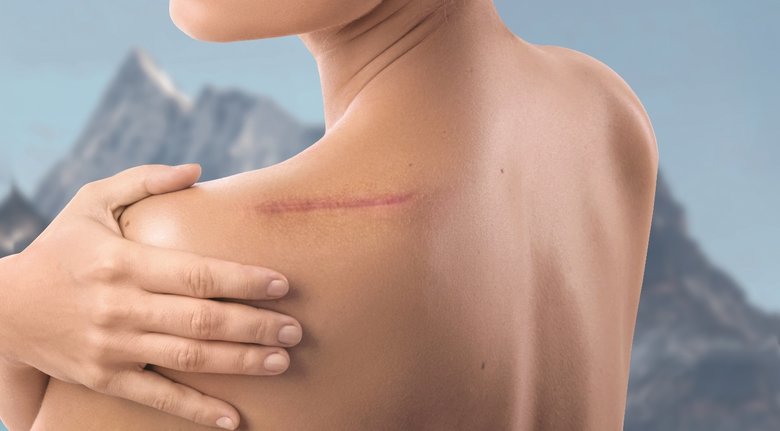The scars: What are, healing and how to eliminate them
If you have to undergo surgery it will result in a large and noticeable scar, it is legitimate to want to reduce it to a minimum. In this article, we explain how scars are formed and how wounds heal, but also how to eliminate the result of the operation or injury in general.
Classification of scars
under normal conditions, the scar should be smooth to the touch and submit a red / pink color which will then clear up with the passage of time, becoming clearer compared to the skin that surrounds it. Furthermore, on the scar formed are absent both hairs and glandular pores. As for the shape instead, the scar can present itself in several ways, including sunken, flat or embossed. The shape of the scar instead follows that of the lesion that led to it.
Anyway, scars can be classified according to different aspects, here are which ones:
- The cutaneous plane of the scar: as we mentioned earlier, scars can be flat, depressed or raised based on the leveling of the skin tissue that characterizes them;
- The time of healing for the scar: based on how long it takes a scar to heal and what stage it is in when it is analyzed, the scar may already be mature or again immature;
- The function of the scar: a scar may belong to the category that it does not foresee no functional limitations, or, if it is a retracting scar involving a joint, it will lead to the development of contractures which involve limitations, more or less serious, of the joint movement in question. In the latter case we will speak of a scar with functional limitation.
As we have just seen, scars are not all the same nor regarding their physical appearance, nor for the consequences they bring with them. During a medical examination, the specialist in question will analyze the second scar parameters we talked about above, that is the cutaneous plane that characterizes it, the moment of recovery in which it is found and any functional limitations that cannot be avoided.
How a wound heals
When you happen to get injured or face a surgical operation that involves a scar, it is necessary to inquire about the healing of the same. Indeed, scar healing involves several stages, each characterized by particular processes with the aim of replace the normal tissues of the dermis and epidermis with a fibrous tissue which forms the scar itself.
Here's what the four stages of healing of a scar:
- Hemostasis: it is the arrest of bleeding caused by the rupture of blood vessels at the time of the injury. If there is a lesion of the innermost part of the vessel, the phenomena of platelet aggregation and coagulation are activated to help stop bleeding;
- The inflammatory phase: thanks to inflammation, all pathogens that occur in the wound are identified and eliminated. Inflammation occurs thanks to the recall of specific cells in the area in question. This phase begins immediately after the trauma and usually lasts a few days, period that will see the wound still swollen and red;
- The proliferative phase: serves to replace the temporary clot that has formed with haemostasis to obtain fibrous tissue, definitely more resistant. This phase begins a few hours after the wound and leads to the formation of granulation tissue;
- The stage of maturation: it is the final stage of wound repair and involves covering it with a solid-looking fibrous scar, clear and robust. The maturation of the scar takes approx 3 weeks, but in some cases even a few months and even years.
In addition to natural healing of the scar that is put in place thanks to the physiological processes of our body, there are gods allies that can help make the scar less visible, as the scar cream. These products contain ingredients such as medical silicone that promote the isolation of the scar to protect it from external pathogens and must be applied consistently for a few months.

